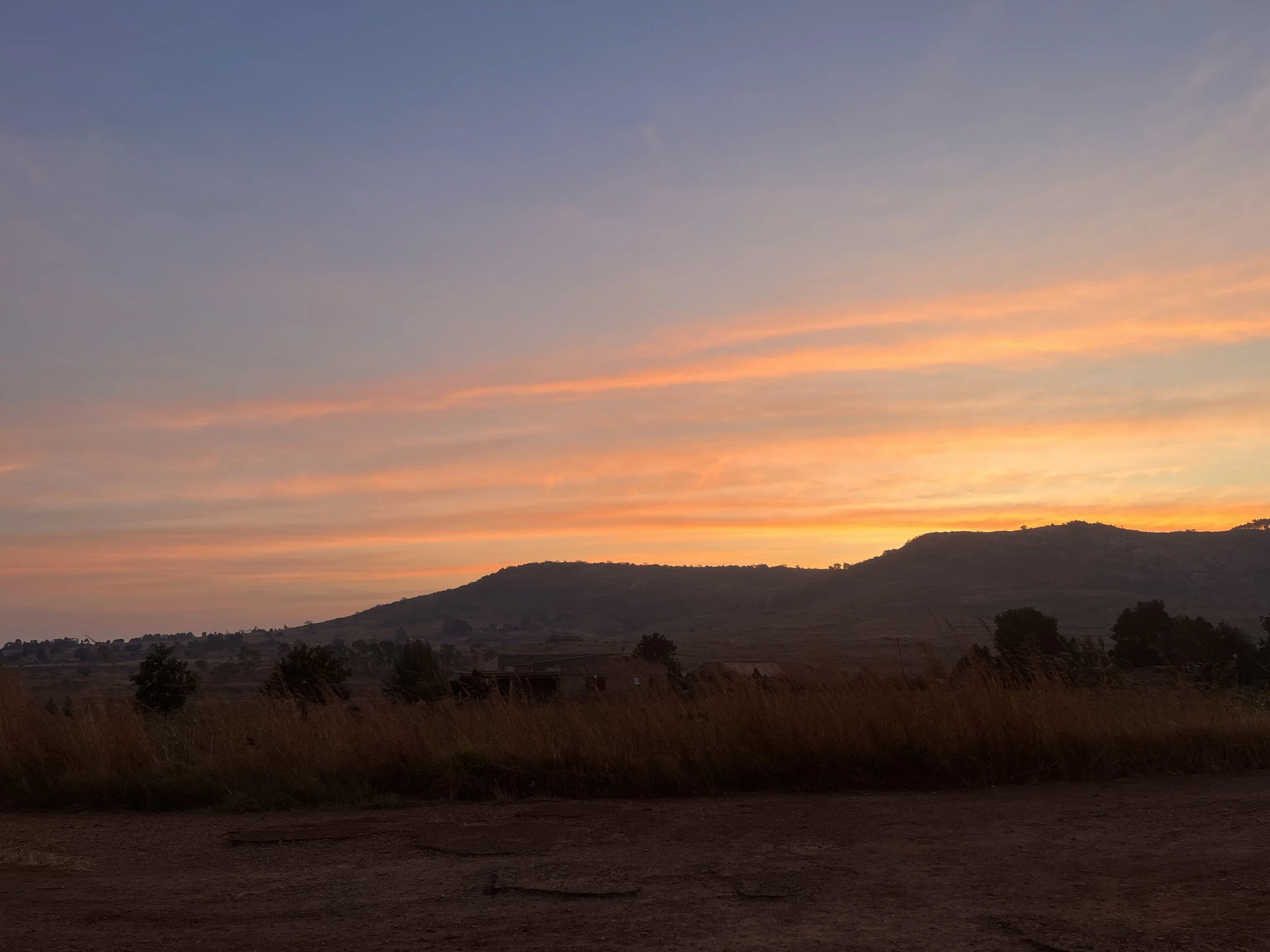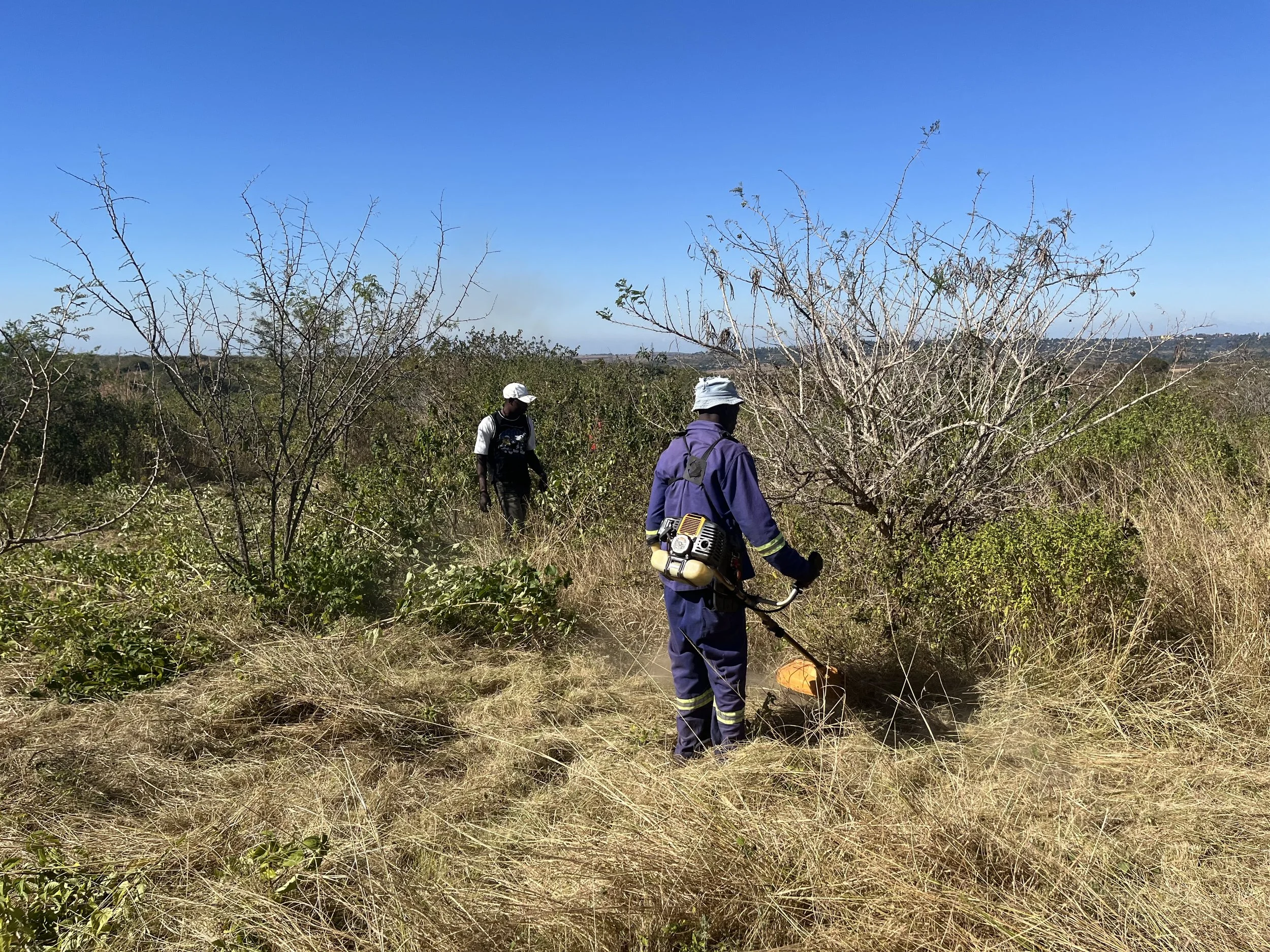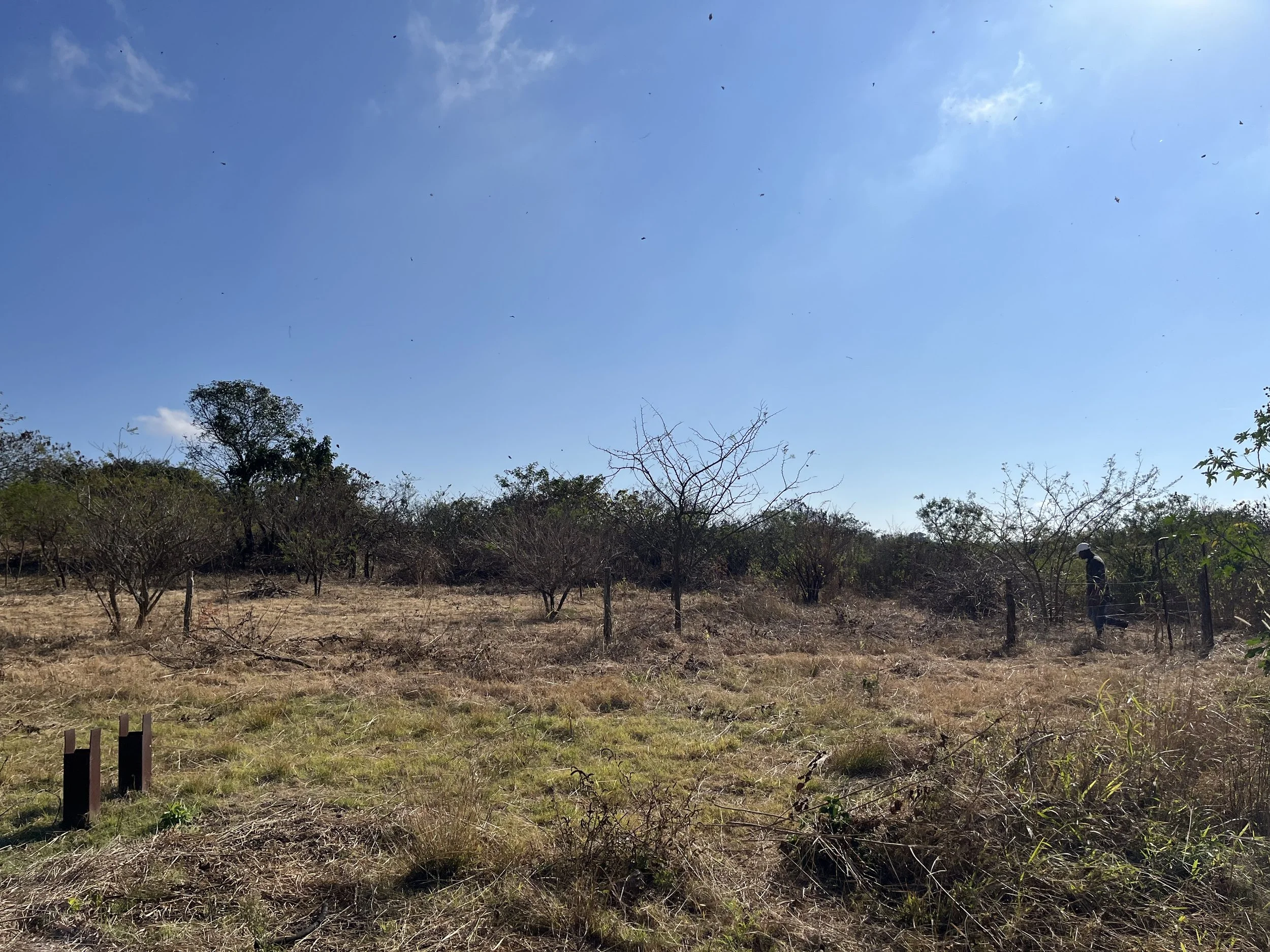ルボンボ山と夕焼け。The Lebombo Mountain and sunset.
(Scroll down to read in English)
前回のブログで農園プロジェクトについて少し書きましたが、実際にどんなところで農園を作ろうとしているのか、より具体的に紹介します。
私の住んでいるナマーシャは標高600m前後の場所にあります。
町の西側にルボンボ山脈があり、その山脈は一番高いところでも800m強。
ちなみにこの山脈に沿って国境があり、南側にエスワティニ、北側に南アフリカと、3国の国境が交わる地点が山の上にあります。
この標高と、西側の山から入る冷たい空気により、ナマーシャは海沿いにある首都マプトに比べても気候が涼しく過ごしやすい気候が特徴です。
現在真冬のモザンビークですが、ナマーシャでの最低気温は大体13℃です。
朝晩さむーっとなっていますが、東京に比べたら暖かいですね。
ナマーシャ界隈の水源は、隣国エスワティニにその上流があるムブルジ川。
街の中にはいくつかのダムがあり、この水を街中で活用しています。
井戸を掘って地下水を飲料水として生産する工場もいくつかあります。
またナマーシャでの観光と言えば、街の入り口付近にある滝が有名。
水には恵まれた町だと思います。
そんな今年の2月、記録的な大雨がありました。
ナマーシャと、それよりも標高の低い東のボアネの町が洪水・冠水の被害に見舞われ、たくさんの農家さんもこの大雨によって被害を受けました。
こう言った異常気象にも、自然を駆使したデザインにより耐えうる農園(環境)をつくる、そこにもパーマカルチャーがさまざまなヒントをくれます。
実際に私が今開墾している農地には傾斜があります。
その傾斜を利用して、水をうまく誘導したり貯蔵したりすることが可能です。
植物を育てるにあたって水の確保は最も重要な要素のひとつ。
植物を育てるのに水が必要ですが、その後植物が増えることによって、土壌に確保できる水の量も増えます。
私の農園でも、ナマーシャ市の水道には接続せずに、近くの川や湧き水、また雨水を利用することを考えています。
パーマカルチャーデザインを通じて、雨水をただ農園で使用するだけでなく、将来にわたって地域全体が活用できる豊かな帯水層をつくり出したいと思っています。
その他の特徴として、農地の周辺には多数の大きな岩・石があります。
表面は土でもその下に大きな岩があるかもしれず、そこは掘ってみないとわかりません。
これらの岩・石が農業や水の貯蔵能力にどんな影響を与えるのか。
これもやってみないとわかりません。
先日、最初の開墾作業は完了しました。
使える全体の面積のうち、1/3程度でしょうか。
まだまだ手を入れることが多いですが、コツコツと進めていきます。
直近の課題としては①水源の確保、そして②コンポスト作成、です。
またそれらについても進捗をシェアしていきますね。
ではでは。
開墾作業、頼もしい助っ人と一緒に仕事。Clearing grass and bush with some helping hands.
開墾後の農地。After clearing the farmland.
I wrote a bit about my farm project in my last blog, but today I would like to share some details about the location of my farm.
The city of Namaacha is at an altitude of around 600 metres. To the west of the city, we have the Lebombo mountain range, which is just over 800 m at its highest point. There is a border along this mountain range, with Eswatini to the south and South Africa to the north, and the point where the three borders meet is on top of the mountain.
Due to this altitude and the cool air coming in from the mountains, Namaacha has a cooler climate than the coastal capital city of Maputo. At the moment, it is mid-winter in Mozambique and the lowest temperature in Namaacha is around 13°C. It is chilly in the mornings and evenings, but it surely is warmer than the winter in Tokyo.
Namaacha is inside the Mburuzi River watershed, which has its source in neighbouring Eswatini. There are several dams in Namaacha and the water is used throughout the city. There are several factories that dig wells and produce groundwater as drinking water. Namaacha has a big waterfall near the entrance to the city, which is the main tourist attraction. I guess this city is blessed with good water supply.
In February this year, there was record-breaking rainfall in the region. Namaacha and the town of Boane in the east, which is at a lower altitude, suffered from flooding, and many farmers were affected. Permaculture design gives us many hints on how to create a farm (environment) that can withstand such extreme weather conditions through creative use of nature.
The farmland I am cultivating now has a gentle slope. The slope can be used to guide and store water. Water supply is one of the most important factors in growing plants. Water is needed to grow plants, but then the more plants you have, the more water you can secure in the soil. My farm is not connected to the municipal water supply of Namaacha, and I am considering using water from nearby rivers and springs, as well as rainwater. Through permaculture design, I want to create a rich aquifer that can be utilised by the surrounding community for generations.
Other features around the farm include the existence of numerous large rocks. Even if you see soil on the surface there might be a large rocks underneath. What impact will these rocks have on the farm and water storage? We shall find out.
Recently, the first clearing work of the farmland was completed. It is probably only about 1/3 of the total area available. There is still a lot of work to be done, but we will keep going one step at a time. The immediate tasks are (1) securing a water source and (2) making compost. I will share the progress on those as well. See you then.


